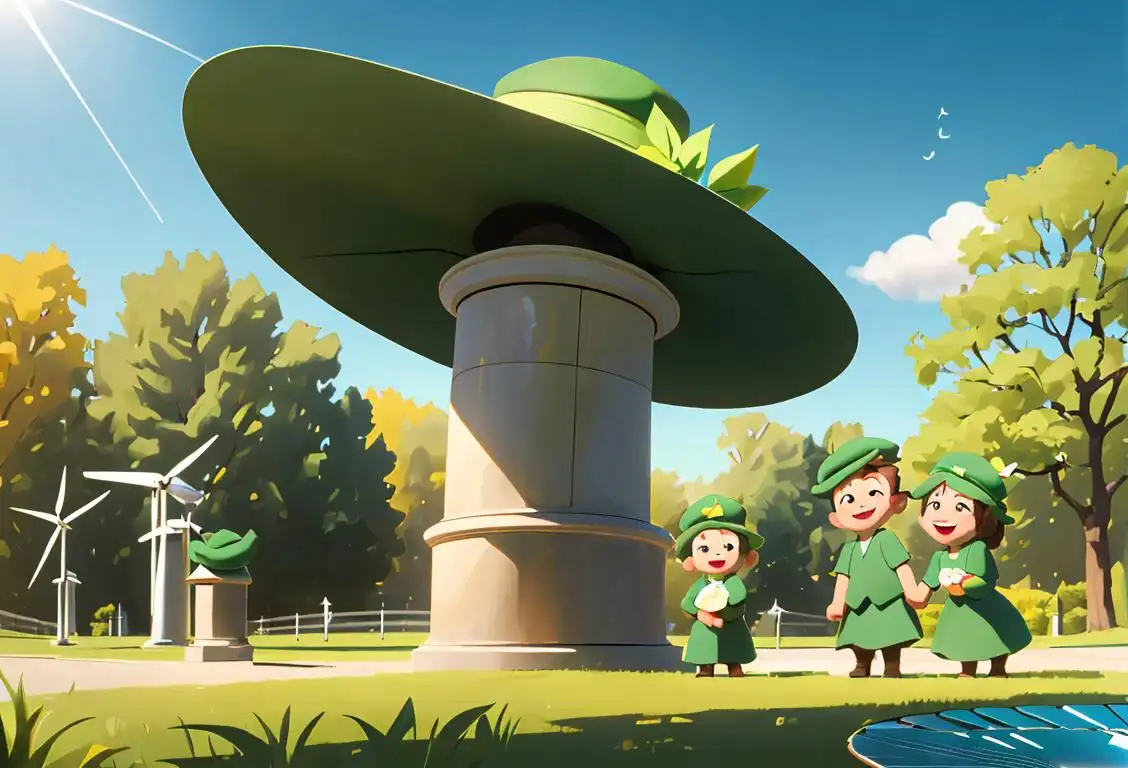National Renewable Energy Day

Hey there, energy enthusiasts! Get ready to celebrate National Renewable Energy Day, a day dedicated to embracing cleaner, greener, and more sustainable power sources. Lend me your ear (or eyes) as we dive into the history and significance of this electrifying holiday!
When is Renewable Energy Day?
It's national renewable energy day on the 24th March.
Shedding Light on National Renewable Energy Day
On this joyous occasion, people worldwide join forces to highlight the importance of renewable energy in powering our future. Whether it's wind, solar, hydro, geothermal, or even the power of positive thinking (if only), renewable energy sources help preserve our environment and reduce our dependence on fossil fuels.
While the exact origins of National Renewable Energy Day are shrouded in the nebulous clouds of the internet, its purpose remains crystal clear: educate, advocate, and appreciate the wonders of renewable energy.
For decades, renewable energy enthusiasts have been striving to harness and maximize the potential of cleaner power. And trust me, they've made significant progress! From solar panels adorning rooftops to gigantic wind turbines dotting the horizon, renewable energy has become a beacon of hope in our pursuit of a greener planet.
The Future's Bright, the Power's Renewable
Looking to participate in National Renewable Energy Day? Great! Here are a few ways you can show your support:
- Take the time to learn about different types of renewable energy and how they work.
- Spread the word on social media using the hashtag #RenewableEnergyDay.
- Join local community events that promote renewable energy awareness.
- Consider investing in renewable energy technologies for your home or business.
Remember, every small action counts, and champions of renewable energy hold the power to make a real difference.
Did You Know?
Did you know that renewable energy has been used since ancient times? Yep, our ancestors were quite resourceful, too! The ancient Persians used windmills to grind grain, the Romans utilized geothermal energy to heat their bathhouses, and the Greeks employed the power of flowing water to operate various machinery.
History behind the term 'Renewable Energy'
1882
The Invention of the Electric Power System
In 1882, Thomas Edison established the first electric power system in New York City, marking a significant moment in the history of renewable energy. This system relied on fossil fuels, such as coal and oil, for generation and distribution.
1882
Discovery of the photovoltaic effect
In 1882, the photovoltaic effect was discovered by a French physicist named Alexandre-Edmond Becquerel. He observed that certain materials, when exposed to light, produced an electric current. This marked an important milestone in understanding the potential of converting sunlight into usable energy.
1942
The First Wind Turbine
In 1942, a prominent researcher named Palmer Putnam developed the first megawatt-scale wind turbine. This milestone brought attention to the potential of harnessing wind power as a viable renewable energy source.
1954
Invention of the silicon solar cell
In 1954, researchers at Bell Laboratories in the United States, led by Daryl Chapin, Calvin Fuller, and Gerald Pearson, invented the first practical silicon solar cell. This breakthrough improved the efficiency of converting sunlight into electricity and laid the foundation for modern solar panels, which are a cornerstone of renewable energy today.
1970s
Rise of renewable energy movement
During the 1970s, the world witnessed a widespread increase in environmental awareness and concerns about fossil fuel dependency. This led to a surge in interest in renewable energy sources as a more sustainable alternative. Organizations and communities began advocating for the adoption and development of renewable energy technologies.
1954
Discovery of the Photovoltaic Effect
In 1954, researchers at Bell Labs, including Daryl Chapin, Calvin Fuller, and Gerald Pearson, made a breakthrough discovery known as the photovoltaic effect. This effect demonstrated the conversion of sunlight into electricity and laid the foundation for solar energy.
Late 20th century
Policy support and research advancements
In the late 20th century, governments around the world started implementing policies and providing incentives to promote the use of renewable energy. Funding for research and development also increased, leading to significant advancements in renewable energy technologies such as wind turbines, hydroelectric power, and geothermal energy.
1973
The Oil Crisis Stimulates Renewable Energy Development
The 1973 oil crisis, triggered by political unrest in the Middle East, led to a sharp rise in oil prices and energy shortages. This event served as a wake-up call, pushing governments and researchers to explore alternative energy sources like solar and wind power.
21st century
Renewable energy becoming mainstream
In the 21st century, renewable energy has gained significant traction and has become increasingly mainstream. Technological advancements and economies of scale have made renewable energy sources more affordable and accessible. Solar and wind power, in particular, have experienced exponential growth and are now major contributors to the global energy mix, reducing greenhouse gas emissions and dependence on fossil fuels.
1997
Kyoto Protocol and International Focus on Renewable Energy
The Kyoto Protocol was adopted in 1997 to combat global climate change by reducing greenhouse gas emissions. This international agreement emphasized the importance of renewable energy and facilitated its rapid development across the globe.
2005
Renewable Portfolio Standards Enacted
In 2005, the Energy Policy Act in the United States enacted the Renewable Portfolio Standards (RPS) to increase the utilization of renewable energy sources. This legislation mandated utilities to generate a specific percentage of their electricity from renewable sources.
2015
Paris Agreement and Renewable Energy Targets
The Paris Agreement, adopted in 2015, set a global target for limiting global warming well below 2 degrees Celsius. As part of this agreement, countries pledged to increase their use of renewable energy and reduce reliance on fossil fuels.
Did you know?
Did you know that renewable energy has been used since ancient times? Yep, our ancestors were quite resourceful, too! The ancient Persians used windmills to grind grain, the Romans utilized geothermal energy to heat their bathhouses, and the Greeks employed the power of flowing water to operate various machinery.Tagged
awareness environment energyFirst identified
20th August 2020Most mentioned on
24th March 2021Total mentions
43Other days
Geothermal Day
Hydrogen And Fuel Cell Day
Renewable Energy Day
Renewable Energy Target Has Passed The Senatea Sad Day
Energy Conservation Day
Arbor Day
Penguin Day
Bike To Work Day
Tree Day
Lobster Day








